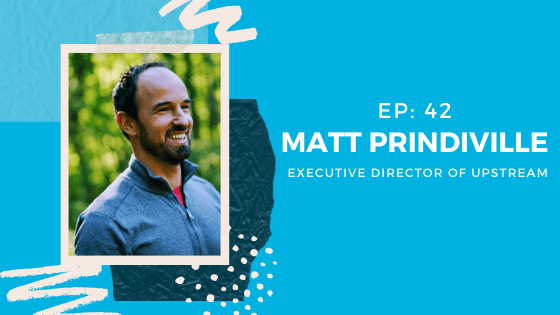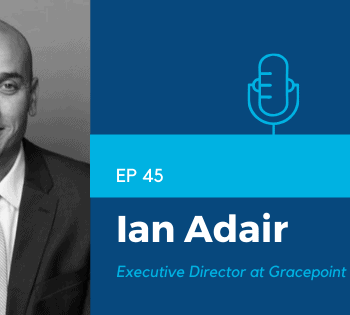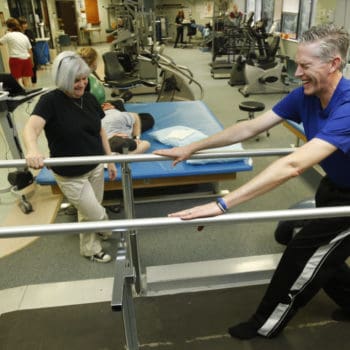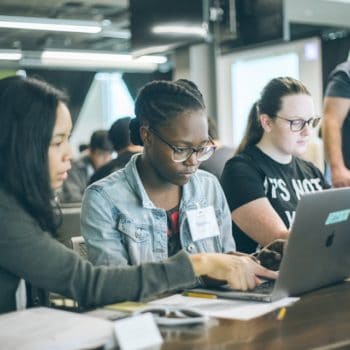Matt is a recognized thought leader within the plastic pollution community and advises the United Nations Environment Program on their plastic pollution strategies. He is one of the founders of the global Break Free from Plastic Movement and the founder of the Cradle2 Coalition and Make It Take It Campaign. He helped establish and advance the Electronics Takeback Coalition, the Multi-State Mercury Campaign, and the Safer Chemicals and Healthy Families Coalition. Matt has written for the Guardian, GreenBiz, and Sustainable Brands among other publications. He’s been featured in the Economist, the New York Times, on NPR’s 1A, Jack Johnson’s Smog of the Sea film, and consulted with 60 Minutes on their plastic pollution special.
Can you share a little about your background?
I was not somebody who grew up with a strong environmental ethic. My dad was an outdoorsman and so we did a lot of stuff outdoors, but it was never about trying to help the environment. All that changed when I took this seminar class as a freshman in college. We read a book called the Ecology of Commerce written by a guy named Paul Hawkin back in the early nineties. It was the first time that I got introduced to this idea called Extended Producer Responsibility. Basically, the idea that companies should be responsible for ensuring that their products are designed with safe, sustainable materials, as well as helping to create an infrastructure to get their products back and recycled into something useful when people are done with them.
Eventually, I graduated from college and I went to work for an environmental nonprofit group that focused mostly on policy. My first day on the job, I was asked to help organize a news conference on a bill that was going to require computer and television manufacturers to set up collection and recycling programs for their products. So, this was the exact same idea that I’d studied about. Over the years I’ve been able to work with other nonprofit groups, local government officials, and musicians and artists around this idea that we need to be designing systems where products are designed with the end in mind. That’s really been the last 20 years of my life.
How are you working to mitigate plastic pollution now?
For us, the problem is not just plastic, it’s really the throwaway culture. That’s at the root of plastic pollution and a whole host of other problems. So, we’re working to build a movement to make throwaway, go away. We have three core areas that we work in. One is through our business innovation project where we work to help large scale iconic venues transition out of single use to reuse. Secondly, we have our policy project where we’re working to create essentially throw away free communities by developing ordinances that make it so that when you sit down to eat at a restaurant, you’re served with real plates, real cups, and real cutlery.
Our last project is launching a culture of change campaign to make this concept of single use history and show that there’s a better way than just throwing away. That’s a lot more fun. So part of how we do that is we use our podcasts as well as our recently launched YouTube video series where we’re showcasing and featuring the heroes of the plastic pollution movement. The activists and the entrepreneurs and the kids and the artists that are out there pioneering the better way. We’re also in the process of looking at how we can use the power of advertising to get people to question this kind of single use addiction that we have and to really start showing that we can move our economy off of single use and build something better in its place. So that’s who we are and what we do.
How does the reuse concept make sense for the bottom line of these businesses?
Great question. You know I think a lot of people that are in the food service industry, especially fast casual dining and fast food type restaurants, have been sold this idea that disposable items are cheaper than reusable. But that’s actually not true. What we have found is that when you make the switch from single use products to reusable, the payback is incredibly brief. For a lot of businesses it’s a matter of weeks to months and it’s rarely more than a couple of months before those businesses start seeing savings. Including businesses that have to retrofit and add extra dishwashing capacity or additional labor costs in managing the reusables, as opposed to just taking out the trash. But when you factor in the costs of inventory management for disposables, plus the solid waste, plus having somebody empty out trash cans every half hour, the savings for businesses are real.
How has COVID-19 affected your overall focus as an organization?
We’ve never been exposed to a global tragedy of this nature. We’re still coming to terms with the impact that this is having on people’s lives and on businesses all around the world. As we look at our work, the priorities right now are in taking care of people. Making sure that everybody is safe, that they have food and water and toilet paper. But also helping to support our constituencies, our communities, and people around the world cope with what’s going on.
So that’s priority number one. But we are also seeing the plastic industry trying to exploit this crisis to scare people away from using reusable items. They’re attempting literally right now to roll back all of these community bands, even state-level bands on single use plastics. We were surprised at how quickly they moved to exploit this crisis. So we’ve had to be responsive to that and actually combat a lot of the misinformation that’s being spread by the plastic industry.
How do you see businesses in America navigating away from the “throwaway culture?”
So you get your food delivered in a plastic bag and it’s got disposable containers and plastic cutlery that you don’t need cause you’re at home. Imagine a different model where you would get your take out food delivered, but it would be in a reusable steel container. And when you were done with it, let’s say that you ordered Indian food on Wednesday night and you order Chinese food on Friday night. Well, when the delivery driver came to give you your food on Friday night, you would hand them the dirty container from Wednesday, because every restaurant in the area is using that same service. So what happens is a company comes and takes the dirty containers, takes them to a commercial dishwasher, washes them, and puts them right back out into service.
So, if I’m the facilities manager for a venue and I’m doing my inventory management, instead of ordering a thousand styrofoam clamshell take out containers, I can now make sure that I have enough reusable takeout containers to serve my whole business for the week or for the month. And I would contract with this other business to provide that service. So, it’s a way of getting people what they want without generating all the waste. Of course, Europe is ahead of us on this. There’s a lot of reusable coffee cups services and reusable takeout container services that are coming up throughout Europe and they’re just starting to get a toehold here in the United States. So, we work with a lot of these companies that can essentially be full-scale providers for restaurants, for venues, or event spaces to get people all the food and drinks that they want, but do it in ways that don’t generate any waste.





